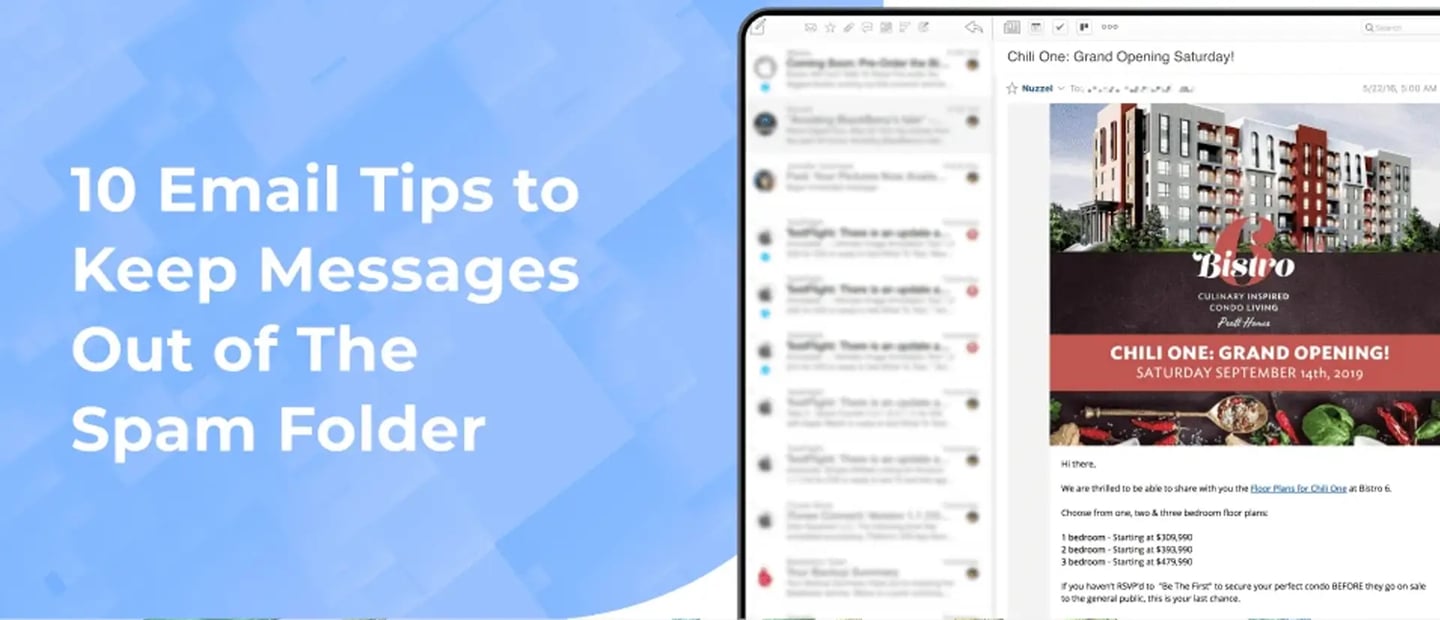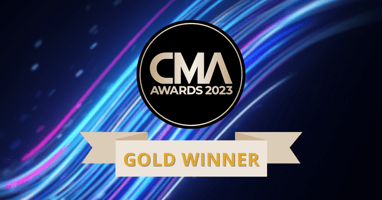
It seems every morning we spend time going through our email inbox, and then inevitably, we check our spam folder to see if something of value accidentally landed there. It’s all too easy to scan that folder quickly and hit delete because undoubtedly most of it is garbage.
But what if you knew that your outbound emails were landing in your customers’ dreaded spam folder, only to be quickly deleted with the garbage? You spent quality time prepping the email, and it contains valuable information that you know your customers will appreciate. Your hard work is going to waste and as a result you are seeing low open and click rates on your email marketing.
Don’t get caught in the spam trap. Follow these 10 email marketing tips to help keep your messages out of the spam folder.
1. Be compliant with Canadian anti-spam legislation (CASL)
First and foremost, if you are sending emails to customers or prospects in Canada, you must follow the laws set out in CASL. Full details of CASL compliance are outlined here, but we’ve provided this helpful synopsis of requirements:
-
Express or implied consent from the person you are emailing. Express consent means that a person has clearly agreed to receive an email before it is sent. You cannot request consent in an email. Consent may also be implied in certain situations, for instance if there is an existing business or non-business relationship. Ensure you understand the consent you have received from your recipients, and keep detailed records in case you are ever asked to prove that consent has been received.
-
Identify yourself and anyone you represent in the message. Provide contact information including your business name, postal address and either a telephone number or e-mail address. This information must be accurate and valid for a minimum of 60 days after the message has been sent.
-
All email messages must include a working unsubscribe button or link and there cannot be a cost associated with unsubscribing.
-
Your email communication cannot be false or misleading in any way. This means you must include an accurate identity of the sender, subject line, any web links, or any other material part of the message’s text or data.
2. Avoid spam phrases
If it walks like a duck and talks like a duck…well, you get the point. If you’re talking like a spammer, you’re going to be perceived as a spammer by email servers. Unfortunately, there is no complete list of spam trigger words. But remember: a spam filter is trying to remove commercial advertisements and promotions. Follow these general guidelines when writing your content and subject lines:
-
Don’t use the word “free” too many times.
-
Don’t use ALL CAPS.
-
Don’t use lots of colored fonts.
-
Only use one exclamation point at a time and avoid using too many symbols.
-
Stay away from words you normally see in spam. Aside from the obvious ones about drugs, pills or sexual content, you want to avoid words like guaranteed winner, coupon and heavy use of percent discounts.
3. Send to large lists slowly
If you’re sending out a mass email message to thousands of customers, it’s more effective to have your email service “drip” the messages out slowly. The reason: spam filters at most email providers look to see how many messages you’re sending at a time. If you break up your list up into smaller groups and send the messages out in segments, you are more likely to land in the customer’s inbox. With marketing automation software, such as Active Campaign, you can segment lists and time them appropriately to avoid these spammy situations.
4. Make sure you're not on the blacklist
If your email server is on a blacklist, you are going to hit a major email roadblock, especially to new people on your lists. Use a free service to see if your server is on a blacklist. Here’s a few to try:
This commonly occurs if you are hosting your website on a shared server. If your server is blacklisted, you will need to follow up with the website that has added you to their blacklist. The tools listed above give you instructions on how to do so. You should also call your hosting provider to tell them that your shared server has been blacklisted and ask them to move you to a different server.
5. Ask for permission
This sounds really simple, but sometimes we forget how effective it can be to just ask permission to be whitelisted. Whitelisting means that once a user has added you to his or her contact list, friend list or address book, you will always end up in their inbox. Use every opportunity to encourage those on your email list to add you as a contact. A typical way to ask customers is to include a short statement in each of your email communications, such as: “Keep us out of your spam folder and enjoy reading the quality content you’ve come to trust from us by adding us to your contact list.”
6. Use spam checkers before sending emails
Don’t waste your time sending a message that will land in spam. Instead, check it for the spam factor before hitting send. We use Mail Tester for our clients. It provides a score and tells you what to fix. The higher the score, the less likely you’ll end up in the spam folder.
7. Keep images to a minimum or use none at all
Normally digital marketers harp on the importance of using images to get messages across more effectively. This is not the case with email. It is usually best to not include images at all, but if you must, here are some tips:
-
Do not send any image-only emails
-
Follow the rule of 80:20 for ratio of text to images
-
Optimize your images the best you can with the correct sizing and branding
8. Keep your list clean
A clean email list with email subscribers that are actually humans will make a huge difference in how an email provider ranks your email. What makes a bad email address? An address that doesn’t exist, has been disabled or has a full inbox. The solution: clean those addresses regularly to avoid being penalized for sending to them. Remember, the best way to avoid creating a “dirty” email list is to use an opt-in process for express consent from a real person and do not buy email lists.
9. Send attachments cautiously
Attachments have received a bad rap due to the fear of a computer virus. If you are sending email with an attachment, it’s best to stick to .jpg, .gif, .png and .pdf file extensions. You must also include some content in the email as well. Avoid sending executable attachments such as .exe, .zip, .swf.
Large email attachments are often flagged as spam or trigger virus scanners. If you send a large attachment, consider using a link that goes to a service like Dropbox for people to view and download the file, or link people to the attachment on your website server.
10. Set-up your DKIM, SPF, Sender-ID, and Domain Keys properly
You’re probably looking at this list of weird acronyms and keywords and thinking, “what are you talking about?” DKIM, SPF, Sender-ID, and Domain Keys are protocols that must be supported by your email server and properly implemented. Together, they help Internet Service Providers (ISPs) determine the authenticity of your email from a behind the scenes technical perspective. Try using IsNotSpam to see if your protocols are set up properly. It’s free and you get a report to tell you what’s working and what’s not.
One final word of advice: don't be afraid of email marketing
Legislation such as CASL and the ongoing frustration of spammers is often a deterrent for many businesses considering email marketing. We’re here to tell you not to be afraid. If you implement these email marketing tips, and follow email best practices, you will be able to connect with customers effectively and happily land in their inbox. If you’d like to learn more, reach out to us.

